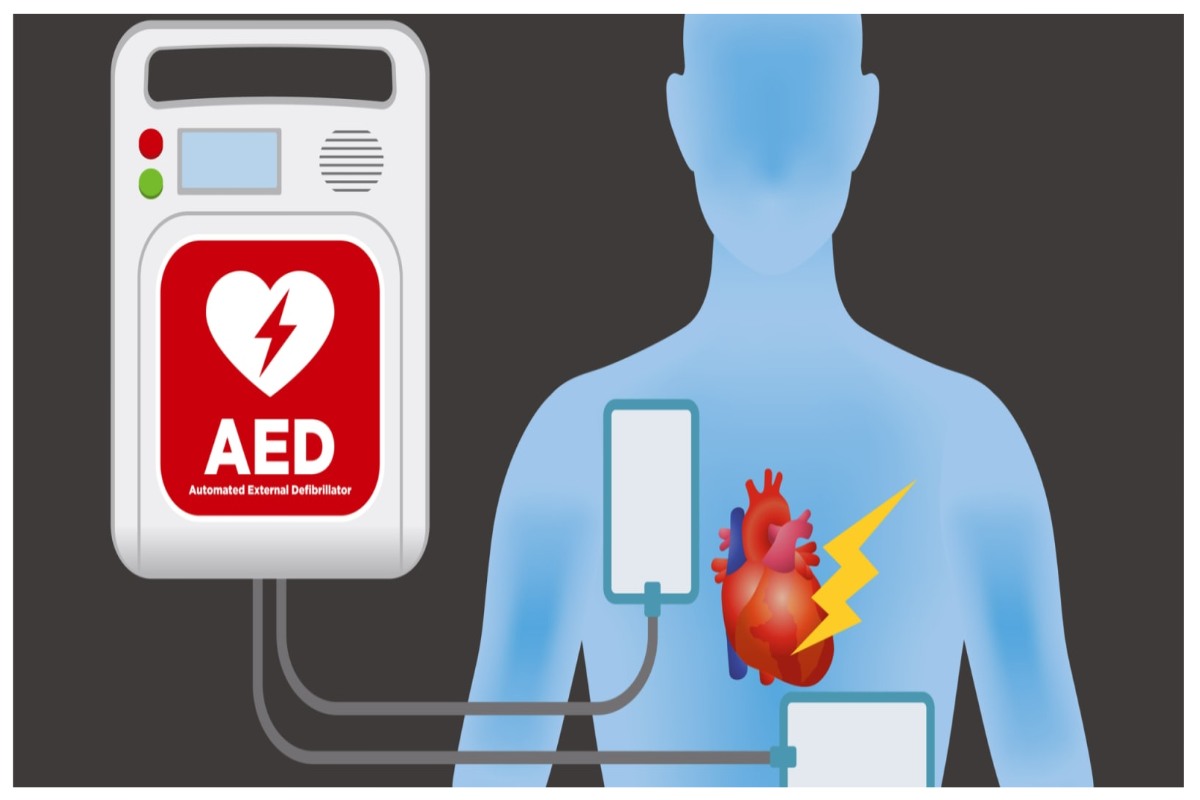Saving a Life with an AED
An automated external defibrillator (AED) can save a life, but only if you use it correctly. Fortunately, using an AED is easier than you may think.
AEDs are portable, battery-operated devices that bystanders can use to save the lives of people having a cardiac arrest; it works by delivering a shock to the patient’s heart. Each year, approximately 18,000 people have a shockable cardiac event in public with witnesses. Bystanders save about 1,700 lives each year by using an AED.
Table of Contents
Save a Life with These 5 Steps
1. Power up the AED unit
Look for the button to turn on the AED unit – the button may be clearly marked as the power button.
Locate and place the defibrillator pads; sealed packages containing the defibrillator pads are often located on the backside of the AED unit. The packaging should include pictures that show you where to attach the pads to the patient.
These pads connect the patient to the AED. They detect the patient’s heart rhythm and send the information to the AED unit for processing.
To place the pads:
- Remove the pads from the packaging
- Remove any clothing covering the patient’s chest
- Place the defibrillator pads on the patient’s chest according to the picture shown on the pad packaging
- Press the pads firmly to attach them to the patient’s skin
2. Wait for the AED to detect and analyze the patient’s heart rhythm
Once the unit is powered on and the pads are attached, the AED will detect the patient’s heartbeat and analyze their heart rhythm to determine if a shock is necessary.
While the AED is evaluating heart rhythm, do not touch the patient; moving or touching the patient during this step can interfere with the AED’s ability to detect and analyze the heart rhythm. Many AED units play a recorded message that warns bystanders to stand clear during the analysis phase.
After analyzing the patient’s heart rhythm, the AED will determine if a shock is needed.
3. Stand clear
If the [AED] determines that a shock is necessary, the unit will charge itself to deliver a shock – this analysis should only take a few seconds. During this time, tell all bystanders to stand clear. Look in all directions to ensure that nobody is touching the patient, as doing so can interfere with the AED’s ability to analyze the patient’s heart rhythm properly. Repeat the message to stand clear several times and in a loud voice.
The AED will let you know if the patient needs a shock. The unit may announce that a shock is advised, that the unit is charging, and that all bystanders should stand clear of the patient.
4. Announce your intentions
As the unit is charging, state your intentions to activate shock delivery to the patient. Let all bystanders know that a shock is forthcoming and that they should stand clear of the patient. Look in all directions to ensure that nobody is near the patient. Say “Stand clear” in a loud voice several times as you activate the unit.
5. Follow instructions on the unit after it has delivered a shock
After the AED has given a shock and tells you it is safe to do so, begin CPR as directed. You can leave the AED pads in place as you deliver chest compressions, as they will not interfere with CPR, and you may have to deliver more shocks. After delivering CPR for two minutes, the [AED] will analyze the patient’s heart rhythm again to determine if they need further shocks. In these cases, repeat the process.
Saving a life with an AED is easier than you might think, just turn the AED and listen to the step-by-step instructions telling you what to do.






